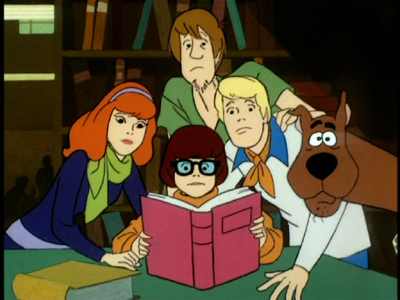Today we are continuing our introduction to gothic literature. Yesterday, we took a look at the elements found in gothic fiction and how gothic fiction was received by critics. Today, we will be taking a look at the terms horror and terror and finding the distinction between the two.
horror vs. terror
No discussion of gothic literature would be complete without defining the distinction between horror and terror. That’s because gothic fiction combines horror, terror, and mystery in an attempt to reach the sublime. We use the words “horror” and “terror” in our everyday language, but what exactly is the difference between the two?
Oftentimes terror is described as the fear and anxiety that something horrific is about to happen. It’s something you experience mentally, a state of mind where you know something horrific is about to happen to you.

“Lewismonk” by Cop 663 – http://en.wikipedia.org/wiki/File:Lewismonk.png. Licensed under Public Domain via Commons – https://commons.wikimedia.org/wiki/File:Lewismonk.png#/media/File:Lewismonk.png
Horror also involves fear, but it’s in reaction to something instead of in anticipation of it. Horror is more of a physical repulsion. You feel terrified about what could happen. You feel horrified about what just did happened. You feel horrified about the body you found. You feel terrified when you realize the killer is coming for you next.
Writers of gothic fiction tend to blend the two together, but some writers explored the terror side of fear (Anne Radcliffe’s The Mysteries of Udolpho), while others explored the horror side of fear (Matthew Lewis’ The Monk). With terror, there’s a sense of mystery and wonder, an anxiety and fear from suspense–the emotion is psychological and comes from within. With gothic horror, the reader is confronted with mutilated bodies, rape, and other appalling subjects that cause a more physical reaction of revulsion and disgust. We see this distinction today in modern horror films–some rely more heavily on psychological terror (The Sixth Sense), while others rely more on physical horror (Scream).
Stephen King adds the word “revulsion” to the conversation of horror and terror. I tend to think of revulsion as a part of being horrified, but King puts a distinction between the two. King refers to revulsion as the gore you’ll find in horror fiction. Unlike horror, revulsion isn’t so much about the fear you experience as it is about grossing out the reader/viewer.

from The Shining. Image from Adam Polselli at https://www.flickr.com/photos/polselli/2172893968
Terror is often viewed as the finest of these fears. Stephen King remarks that he strives to terrorize readers first and foremost:
I recognize terror as the finest emotion and so I will try to terrorize the reader. But if I find I cannot terrify, I will try to horrify, and if I find that I cannot horrify, I’ll go for the gross-out [revulsion]. I’m not proud. — Stephen King
Anne Radcliffe would agree, noting in her writings:
Terror and Horror are so far opposite that the first expands the soul, and awakens the faculties to a high degree of life; the other contracts, freezes and nearly annihilates them …. And where lies the difference between horror and terror, but in the uncertainty and obscurity that accompany the first, respecting the dreading evil?
It’s the sort of notion that the fear of evil is worse than the evil itself, but more than that, the feeling of terror is something that awakens your soul and allows a sort of transcendence that can’t be experienced when one is horrified because horror freezes the mind rather than unlocking it. In last week’s post, I mentioned that we enjoy haunted houses because it allows us to experience the high of fight or flight, while also giving us a moment where we’re forced to be in the here and now, releasing us from the worries and stress of the everyday life. It’s a feeling that is sublime. That’s the experience gothic fiction strives to achieve — a feeling of terror that opens you up to something you wouldn’t be able to experience otherwise.
Next week, we’ll take a deeper look at what gothic writers were referring to as the sublime.
your turn
When you feel in the mood for something creepy to read or watch, do you tend to gravitate towards psychological terror (Sixth Sense) or horror (slasher films)? Do you prefer scary movies with a lot of gore or movies that leave you more in suspense? Why is it you enjoy one more than the other? Or perhaps you enjoy gothic parodies such as The Addams Family or Scooby Doo. Or would you rather just leave the scary movies and books alone? Leave me your terrified thoughts in the comments below.




